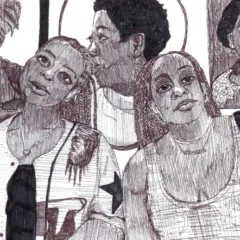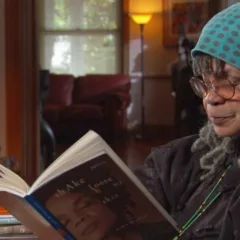Since the quarantine began, I’ve been thinking a lot about movie theaters – not just the movies screened within, but the actual buildings in which they are projected. Where I live in Baltimore might seem like an unlikely place to explore the architecture of picture houses. But in 1950, at the height of the city’s population, film fans could choose from 119 theaters in which to watch a movie. By 2016, that number had dwindled to three. What happened?
Going to the movies is an enduringly popular American pastime. Though the first motion pictures were produced in France, and though the medium has long since spread to all corners of the globe, going to the movies is still seen as American as apple pie or baseball. From the nickelodeons around the turn of the last century; to drive-in theaters in the postwar era; to today’s sprawling multiplexes, watching moving pictures projected on the silver screen within a shared, public space remains a significant part of the American experience and is deeply imbedded in our psyche.
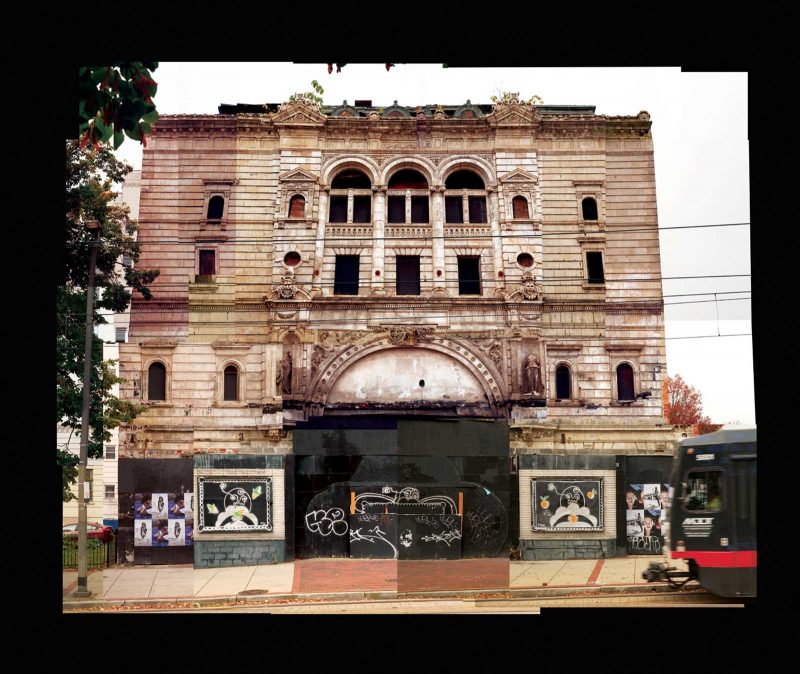
So it was with deep regret and a strange sort of irony that movie theaters in the United States – one of the few developed nations so greatly affected by Covid-19 – had to close their doors to the public these past few months. Sadly, most of the movie theaters in Baltimore were already shuttered and in a state of steady decline for far longer. A few blocks from my apartment stand the relics of the Mayfair Theater, built in the late 1800s. Today, it is literally a shell of what it once was. Following decades of neglect, the Mayfair closed down in 1986. Later, its roof collapsed, leading to deterioration of the exposed inner structure. In 2014, an adjacent building fire further damaged the abandoned building. The city finally decided to demolish all but the Beaux Arts façade, which is designated a municipal landmark. Today, the Mayfair looks like something out of an Edgar Allan Poe story: its windows are boarded up; its crumbling and cracked face has small trees growing out of it here and there; and its base has been repeatedly painted and papered over by graffiti and posters. There it sits, a faded palace from a forgotten time, as the light rail speeds by on Howard Street.
Since the stay-at-home order, many Americans have turned to their computers to stream movies on platforms like Amazon, Hulu, and Netflix to get their film fix. When streaming, it’s all too easy to stop a movie partway through and then decide to watch something else after returning from the bathroom or kitchen. And there are too many options with online viewing. It might take half an hour to settle on something, only to be immediately disappointed by it. When you went to a movie theater, you had to pick one of several films, and if it was a stinker, you did your best to see it through to the end. And who knows? Maybe it wasn’t that bad by the end after all. Watching movies at home also lacks the communal aspect of going to the movies. Though people don’t usually interact at the cinema, there is something almost civic or even religious about going to the movies. Like a town hall or a church service, movie goers assemble and sit (mostly) in silence, observing a theme, together. In this sense, the movie theater represents a sort of non-denominational, secular church, where all are welcome. Watching movies on your computer or television is simply not the same experience as watching them– with a large audience in a darkened room– on the big screen.
As award-winning photojournalist for the Baltimore Sun Amy Davis writes in the preface of her fascinating book, Flickering Treasures: Rediscovering Baltimore’s Forgotten Movie Theaters:
The Senator Theater, an Art Deco treasure built in 1939 and just three blocks from my house, was a beacon on York Road: a comforting, constant presence that enhanced the pride I felt for my neighborhood. When my children and I watched the searchlights raking the night sky for film premieres, we were reminded that there was more to watching movies than sitting close to the cool glow of our small television.
Flickering Treasures is a beautiful compendium of Charm City’s cinemas, comprised of then-and-now photography accompanied by brief essays by local filmmakers like Barry Levinson and John Waters. Davis contrasts historic black and white photographs with her contemporary full-color images, evoking how time has taken its toll on the city’s movie theaters. Photographs from Flickering Treasures are currently on exhibition at the Maryland Center for History and Culture.
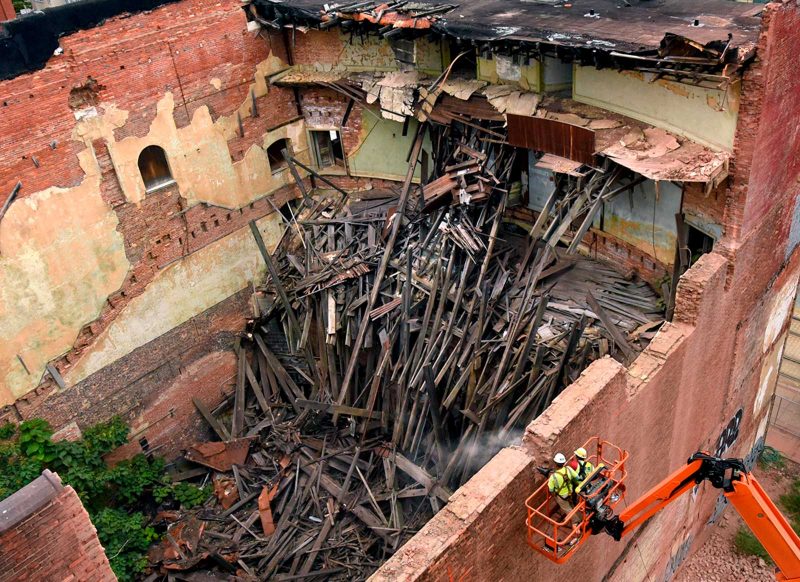
The architectural styles of Baltimore’s movie theaters range from the grandiose elegance of the Beaux Arts fashion, found in the façade of the Mayfair, to the Streamline Moderne of the Centre Theater on North Avenue in the Station North Arts District. Unlike the Mayfair, the Centre is still in use. But like the Mayfair, only its exterior remains intact. The interior spaces of the Centre Theater have been renovated to accommodate film courses for the Maryland Institute College of Art (MICA) and Johns Hopkins University. In fact, many of Baltimore’s movie theaters have been repurposed in one way or another. Some have been converted into churches. The Patterson Theater on Eastern Avenue in Highlandtown is now the home of Creative Alliance, a nonprofit community arts group.
Others have been successfully rehabilitated and returned to their original glory. Standing at the corner of Charles Street and North Avenue is the Parkway Theater, which fell into disrepair, closed down for many decades, and was recently renovated as a movie house. I was first exposed to the Parkway while a graduate student at MICA, in a classroom a few blocks west of the theater. As part of my Grad Survey course we watched Writing History with Lightning (2015) by the Philadelphia artist duo Nadia Hironaka and Matthew Suib. This deeply disturbing, experimental film consists of various altered and looped scenes from D.W. Griffith’s controversial 1915 silent film The Birth of a Nation projected onto the interior spaces of the then abandoned Parkway Theater. In Writing History, the distorted images of Griffith’s racist film march across the Parkway’s architectural details, theater seats, and discarded objects from the building’s past, a past that includes a screening of The Birth of a Nation. The projected images, captured with a high-definition camera, were filmed from within the theater. That footage was then coupled with a transmogrified version of the original score to The Birth of a Nation.
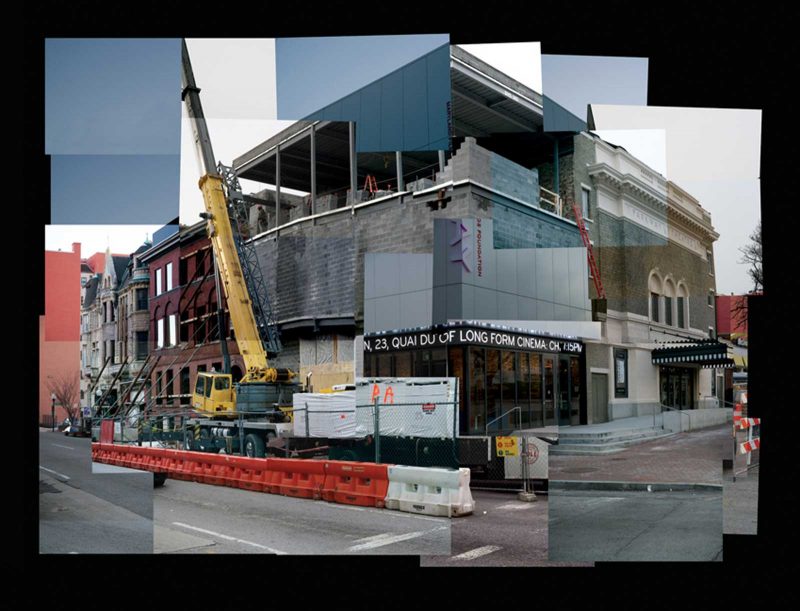
The date and title of Hironaka and Suib’s powerful film are most significant. Writing History was created in 2015, a century after The Birth of a Nation was filmed and the Parkway first opened. It was also the year that Freddie Gray was murdered in Baltimore while in police custody, the protests to which passed by the Parkway in the spring of 2015. The source of their title comes from President Woodrow Wilson, who after screening The Birth of a Nation at the White House in 1915 (significantly, the first film screened there), allegedly remarked, “It is like writing history with lightning, and my only regret is that it is all so terribly true.” While we’d like to think that things have changed for the better over the course of a century, artworks like Hironaka and Suib’s force us to reconsider such assumptions.
I’ve been to several amazing shows at the Parkway since it reopened in 2017: Vagabond, by the French director Agnès Varda, during the 2017 Maryland Film Festival; later, a live performance by the Baltimore-based band Animal Collective in 2018; both of which serve as a corrective to the dark and disturbing themes from my first associations with the Parkway. Still, the imagery from Writing History with Lightning haunts my mind, and reminds me that we need to preserve and protect people as we preserve and protect architecture and films.


